Story by Brandes Elitch
Photos by Petya Elitch unless otherwise noted
Over 700 people registered for “Alfa California 2013: Sonoma Valley Wine Country,” a joint venture of the National Alfa Romeo Owner’s Club (AROC) and the San Francisco-based Alfa Romeo Association (ARA).
Keep in mind that the last new Alfa was sold here almost twenty years ago. Alfas were never common in the US, and expensive when new. Unlike the owners of some even more expensive Italian marques, Alfa owners are different. For one thing, they drive their cars. For the most part, the cars are not restored to a “better than new” standard for concours judging or evaluation. Many of the cars at the show here were restored to a very high standard, but they are usually driven, not restored and put away to await the next swell in market pricing. They are not so complicated, and the parts are not so expensive, so that a person with normal mechanical skills is able to do lot of the work themselves. But what makes them so compelling? And why do over 700 people attend the conventions for these cars?
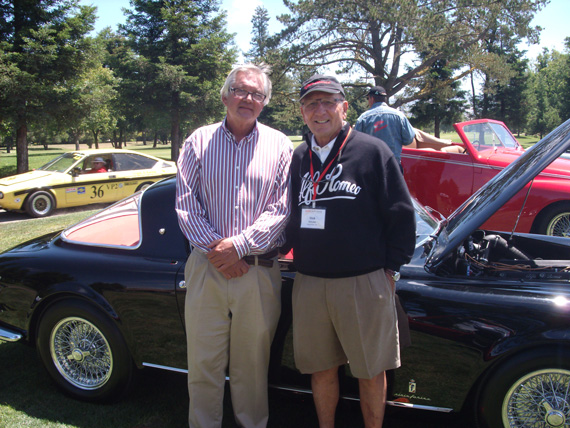
Bruce Trennery, founder of Fantasy Junction in Emeryville, and Dick De Luna, prominent collector in the Bay Area enjoy an Alfa momemt.
Of course, you would start with the styling. To quote from an article in the summer 2012 number of the UK Alfa house publication, “It’s partly about stance, proportion, the car’s face, a fluency of line, the art in the detail– and some magic.” Alfas are balanced and lightweight, to achieve the primary goal: drivability, the way they connect with the driver. The designer of the 1900, the Giulia, and the Giulietta, Orazio Satta Puliga, put it this way:
*“Alfa Romeo is not just a car factory. Enthusiasm for a means of transport is a kind of disease. It’s a way of life and something that defies definition. Its elements are like those irrational traits of the human spirit that cannot be explained by logic.”
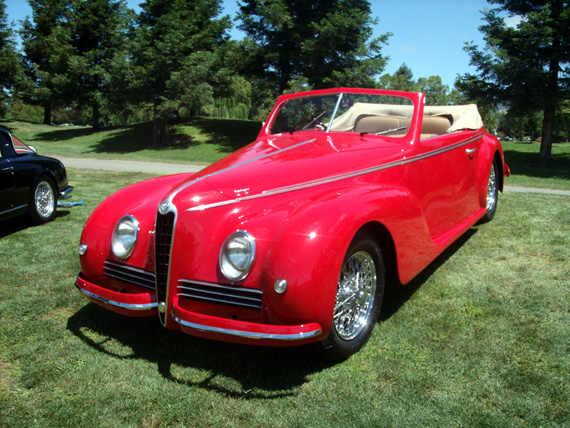
A great example of the coachbuilt Alfas was shown at the Convention this year, a 6C2300 with a Touring body dating from about 1942.
The prewar cars were all custom-bodied, but the war changed all that, and the focus became making a car that embodied the performance and racing heritage of the prewar period into a family sedan, and its derivatives, for the middle class. A big part of this heritage was real road-racing, (something we lost after 1952). This includes the Coppa Florio, the Targa Florio, the Mille Miglia, and many towns had their own races (Pescara, Rome, Turin, etc.).
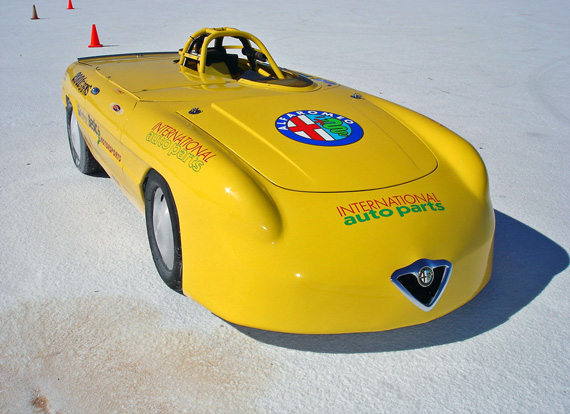
In 2006, the screaming yellow Spider managed a 217.152 mph average over two runs to claim the G/BGMS (Blown Gas Modified Sports) record the team had been chasing since 1999. That also made Bonnie the fastest full-bodied Alfa Romeo ever, beating the record previously held by the Alfa factory's one-off ProCar 164. Photo IAP.
Alfa has an unsurpassed history of high performance motors too: the twin-cam four-cylinder of 1954-1997 would be most familiar to Americans. It is eminently “tuneable,” witness Richard Kreines current record at Bonneville with a 1992 Twin Spark Alfa motor. This is the motor most familiar to Americans: a twin cam, mostly aluminum hemi-head. Then there is the V6 (1979-2005), familiar to us in the GTV6, the Milano, and the 164. These are the motors that power the family sedans that were the bread and butter of the factory’s offering in the postwar period.
All this helps to explain why these cars are so desirable today. It even helps explain why they still have such a devoted following in a country where they haven’t been sold for nearly twenty years. But how do you put together an annual meeting that brings these owners together?
I spoke to the Convention Chair, Steve Davis, and the Registration Manager, Mary Ann Dickinson, about their approach. First of all, a convention like this takes a lot of preparation – two years’ worth. That’s because the National AROC Board considers a proposal two years in advance. Normally, the convention is held over a long weekend, but that wouldn’t work in Sonoma County in July. There would be no price breaks or even availability for hotel rooms on a weekend in a major tourist destination. Therefore, this was a Monday-to-Friday convention – the first ever for AROC. Steve realized that they would lose perhaps 20% of potential attendees, but he had a budget to consider.
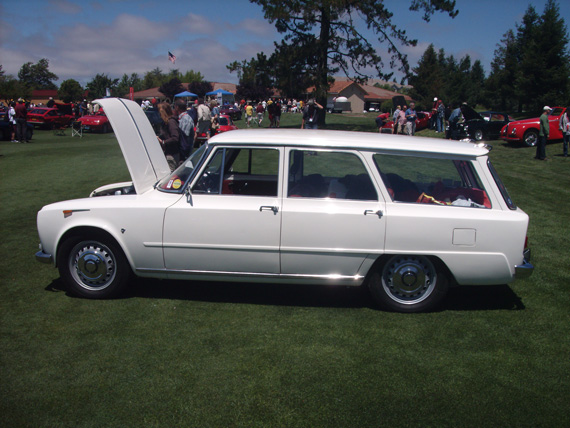
Another rare and very desireable Alfa appeared at the Convention, the Colli-bodied station wagon based on the Alfa Giulia sedan.
Because Alfa owners drive their cars, every convention is centered around a track, and there are three in Norther Calfornia; Laguna Seca, Thunder Hill, and Sears Point, aka Sonoma Raceway. Carmel was too expensive, and would conflict with the Historics a month later; Thunderhill is too far out of the way. Steve felt that the Wine Country and Highway One were a great draw.– in fact, it made the decision easy. What also helped was the banquet and meeting facilities at the host hotel – the Doubletree in Rohnert Park.
There were 18 people on the steering committee, and each person was responsible for a specific task or event: track time trials, autocross, concours, rally, tours, etc. The planning was intensive and each event had backup contingency plans in the event things went differently than anticipated. Take a look at the agenda:
1. Time trials a the twelve turn Sonoma Raceway road course, one of the most challenging tracks in North America, and one of only two NASCAR road courses. There were two other events at Sonoma Raceway – a professional driving instruction course at the track, and an Autocross in the raceway paddock.
2. An intermediate-level TSD rally, and a second “gimmick rally.”
3. A bus tour and wine tasting of Sonoma County, and another to San Francisco
4. Driving tours of Highway One and Marin County, and a second tour of the Napa Valley
5. A swap meet, followed by a 150 car Concorso the next day at a local golf course. Some very special cars were on display, including a 8c2300 pre-war racer and a one-of-a-kind special-bodied 6c2500.
6. A tour of the Keller collection, one of the most spectacular private museums in the country, not open to the public and by special invitation only.
7. Technical seminars on restoration, tuning and performance, valuation, etc.
8. A fun “midnight” Concorso where cars were judged based on their creative lighting.
9. Three post-convention driving tours.
A special treat was a banquet featuring Denise McCluggage as the guest speaker. She maintained her amateur standing – “money was different then.” You drove what you had and made the most of it, in races, rallys, hill-climbs, etc. She warmed up the audience by saying, “I never belonged to an organized car club, just an Alfa Club!” She raced in 1956-7-8. She beat “all the men and all the Corvettes.” She said, “We all think that our time racing was the best – in my case, I’m right!” Things were more fun than now – “money does that.” She said, “The past is a foreign country; they do things differently there.” Then, she would borrow a Ferrari in New York, drive it to Chicago, race it on the track, and drive it home, without even changing the plugs. If you won, you left the numbers on. She always loved Italian cars, and had a 1958 Sprint Veloce. In those days you had one of two problems: carbs (fire) or battery (trunk mounted, fell over, spilling battery acid everywhere). When you met an Alfa owner, the first thing you would say is: “Carbs or battery?”
Everything went like clockwork at the 2013 annual meet, thanks to Steve, Mary Ann, and the other volunteers. Next year, it will be in Detroit, and they are already hard at work on the agenda. Regardless of what else is going on in Detroit then, it should be fun.
*Richard Bremner in the Summer 2012 number of “Alfa, The official Magazine of Alfa Romeo UK,”
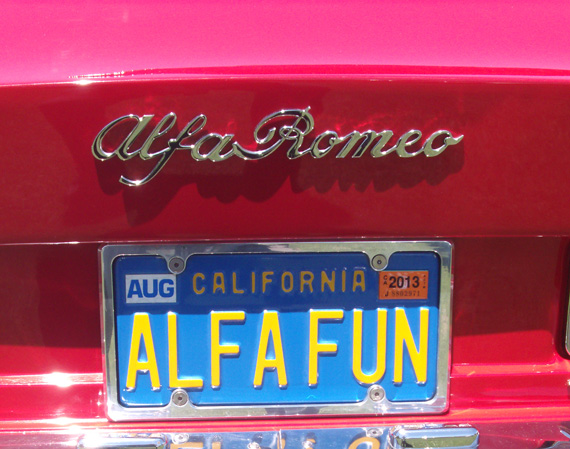
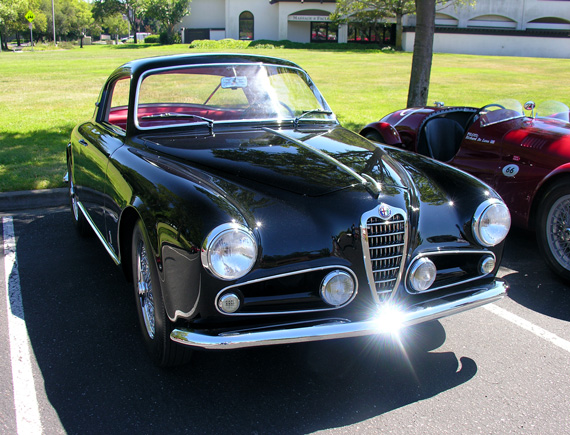
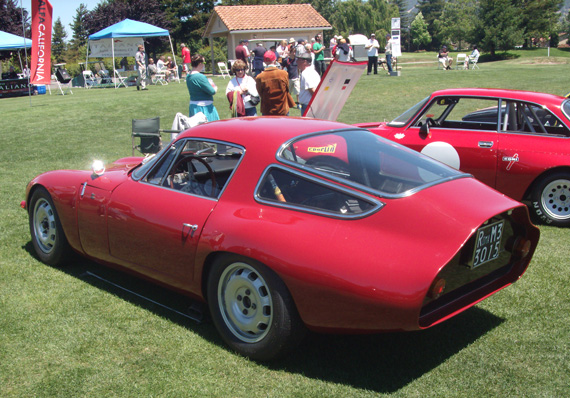
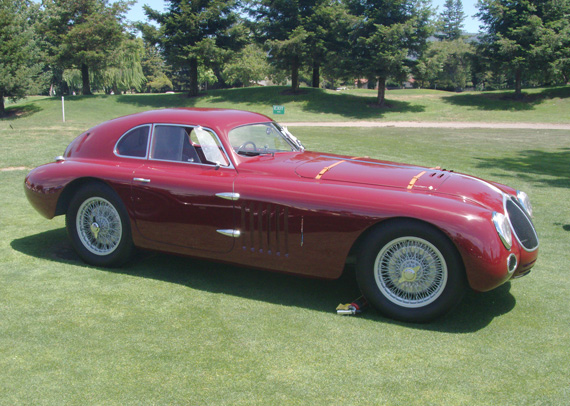
Nice article, as an attendee I can agree with the comments on the Convention. I also concur with the author’s assessment of why Alfa Romeo owners are unique among Italian car enthusiasts, affordability and drivebility. Also the range of models produced, with something for everyone.
More pictures please !!!!
My wife drives a modern Audi A6 which while quite competent is utterly boring to drive. If I’m going somewhere it’s always in my GTV6 or Milano Verde. Alfa Romeos light me up.
I really enjoyed the convention including the time trials at Sears Point. What a blast. The track day was after driving back roads south along the east side of the Cascades from Seattle and before returning up the coast. About a 2000 mile trip. Isn’t that the definition of a GT, i.e. Grand Touring? I’d say it’s the definition, heart and soul of an Alfa.
And I also enjoyed hanging out in the parking lot examining cars and talking with the enthusiasts. My kind if vacation. My hearty thanks to the organizers.
Alfas are really wonderful cars. The engines are a catalyst for enthusiasm. They are elegance expressed in aluminum. As for the rest of the car, there is exhibited a thoughtfulness about it’s construction. Where a lesser marque will have an assembly of several pieces to achieve a function, an Alfa will have a single part. The styling of the classic Alfa reveals an organic sense of the purpose. They show the countenance of principle in the expression of shape as an active response to motion and air resistance. The styling goes even beyond that, for at rest the bodies communicate portent of motion and energy. They are a great reward for the motorhead.
Alfas are the ultimate in a more bang for your buck car. My favorite road car is the Milano Verde, With slight mods, you san cruise at 130 without effort and in total comfort thanks to Recaro seats and great Dedion trans axle . The Guilieta spider is superb for all around summer fun. With some mods, you can obtain great performance and handling like outperforming Porsches in vintage competition and if it’s records setting speed you’re after….Try a turbo mod on a 2 litre for 650 hp and 234 mph. at Bonneville salt flats…How can you beat it?